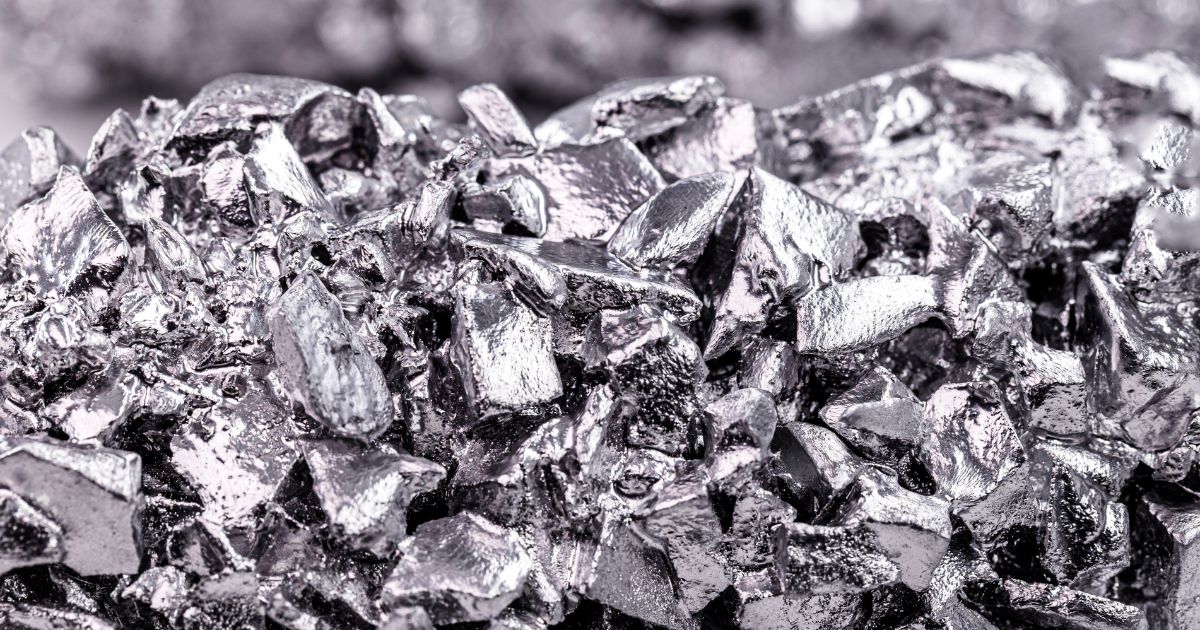There are 70 metals in the periodic table and an endless number of metal alloys. With how many metals exist, it begs the question, which metal is the strongest?

A few traits characterize metals: reflectivity, malleability, and ductility, as well as their ability to conduct heat and electricity. However, as you may have noticed, strength isn’t one of those characteristics. We may think of metals as some of the strongest materials on Earth, and a handful are, but many are not. The periodic table also doesn’t include the slew of manufactured metal alloys that create even stronger materials than what nature can create.
We measure a metal’s strength based on different factors, and it doesn’t come down to how easy it is to dent. We measure a metal’s overall strength based on its impact, compressive, yield, and tensile strength. Impact strength is how much energy the metal can absorb without fracturing. Yield strength is how well the metal resists permanent deformation. Compressive strength is a metal’s resistance to being squeezed, and tensile strength is how far a metal can pull before it breaks.
With how many metals exist, the question is, which are the strongest? To answer that question, let’s look at the top four strongest metals in the world.
Titanium: The Strongest Metal?
Titanium has an incredibly high strength-to-weight ratio, meaning it’s relatively lightweight for how strong it is. While it’s also corrosion-resistant and has good thermal stability, it’s a poor conductor with low yield strength. However, it has the strongest tensile strength out of all the metallic elements on the periodic table. These factors are why you’ll often see titanium throughout the aerospace industry. There aren’t more titanium buildings because it’s much harder to melt, shape, and bend, meaning it would take an incredible amount of work to create just one building.
Steel: A Metal Variant
Steel is a manufactured metal alloy, as it’s an alloy of carbon and iron, so you won’t see it on the periodic table. Adding carbon improves the iron’s overall strength, giving it a high-impact strength. Since it’s relatively cheap to create, widely available, durable, and can withstand extreme temperatures, it’s one of the Earth’s most popular building materials. For example, you’ll often see manufacturers use steel for storage buildings. This is because one of the benefits of using steel for storage units is its extreme durability and ability to protect whatever is inside.
Chromium: An Automotive Superstar
You’ll often see chromium, while it’s strong on its own, in stainless steel. This metal has an incredibly high compressive strength but an incredibly low impact and tensile strength, so it’s often in alloy form. For reference, if you were to judge the strength of a metal solely based on its hardness, chromium would be number one. You’ll often see chromium alloys within the automotive industry, most popularly in vehicle accessories like door handles and mirror covers. The main benefit of using chrome in the automotive industry is its corrosion resistance, but it also has a naturally shiny and metallic look.
Iron: A Surprising Contender
It might seem strange to see iron as one of the top four strongest metals in the world because it’s often in alloy form. However, there’s a reason why this metal has been the go-to material for tool makers for centuries. It’s malleable, ductile, and strong, with a relatively high yield and tensile strength. The advantages of using iron in tool-making lie in its accessibility and how easy it is to work with in terms of heating and forming. Iron is the way to go if you want to create a tool that will last you a lifetime.





